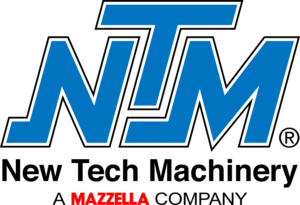What Is Metal Rollforming? Uses, Types, Parts, & Definitions
Whether you notice it or not, products made using the process of metal rollforming are everywhere. Items could include something as visible as metal roofing or garage doors, or products working behind the scenes, like pipes, window frames, and countless others.
However, how much do you know about the equipment used in metal rollforming and everything it can produce?
With over 25 years fabricating and producing portable metal rollforming equipment, New Tech Machinery knows the importance of education on how metal rollforming began and why it’s still so important to this day, especially if you work in the metal fabrication industry.
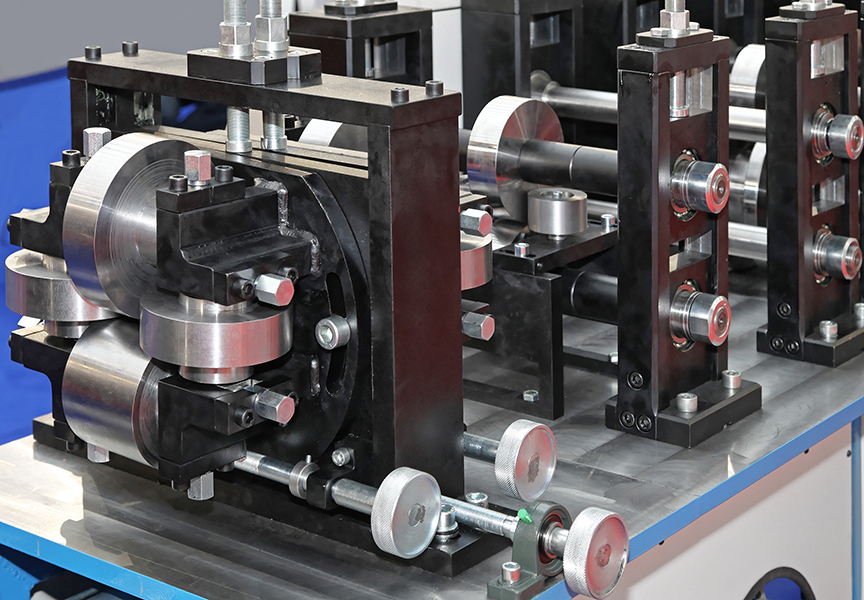
In this article, expect to learn:
- What is metal rollforming?
- The importance of metal rollforming
- Common rollforming machines and products
- Common parts of a rollformer
What Is Metal Rollforming?
So, what exactly is metal rollforming? We’re glad you asked.
According to the Metal Construction Association (MCA), rollforming is defined as:
“A continuous bending operation in which a strip of metal, typically coiled steel or aluminum, is passed through consecutive sets of rolls, or stands, each performing only an incremental part of the bend until the desired cross-section profile is obtained. Portable roll forming is ideal for producing parts with long lengths or in large quantities and are designed so they can be moved easily to various locations or job sites.”
In other words, it’s the process of feeding metal, whether it’s finished, coiled, flat, or otherwise, through a series of rollers where each roller station further manipulates the piece of metal into the desired shape.
Origins of Metal Rollforming
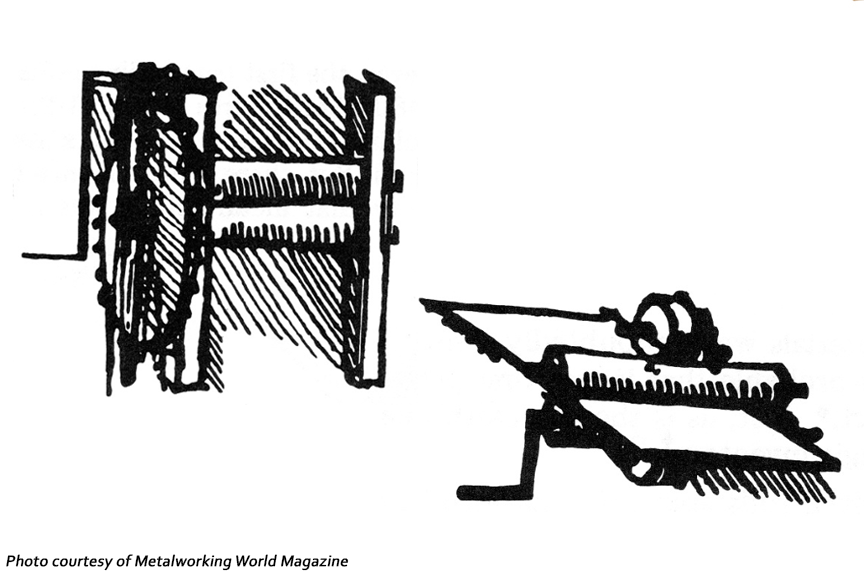
Metal rollforming has existed for thousands of years. In fact, according to LTC Roll & Engineering, the concept of rollforming started as early as 600 B.C. This archaic rollforming typically involved hammering ductile metals found in the earth, including copper and gold, with hard objects until they were flattened or formed into a shape.
More advanced forms of rollforming developed over the following centuries. One of the earliest known designs of a more modern rollformer is attributed to Leonardo da Vinci in a 1480 sketch of a “rolling mill” depicting a material passing through cylindrical rollers to be flattened. The first actual industrial rollforming/metal working plant on record launched in the early 1600s in the United Kingdom.
For more history on the origins of metal rollforming, check out Metalworking World Magazine’s article.
After its inception, metal rollforming has experienced considerable growth and expansion over the years, which has led to an increase in the demand and use as well. Plus, with new computers and technological advances developed every single day, it’s expected that metal fabrication and rollforming will continue to grow and adapt to consumers’ needs in the years ahead.
Industries Using Metal Rollforming
One of the best parts of metal rollforming is its ability for use in many different industries and sectors, such as:
- Automotive
- Architectural
- Construction
- Industrial
- Agricultural
- Aeronautics
- Technology
- Other general metal fabrication sectors
The Importance of Rollforming Equipment
To get a better idea of the importance of rollforming equipment and machinery, think about what the workforce would be doing if metal rollforming machinery didn’t exist.
Instead of machines producing and rolling thousands of pounds of metal per day, humans would have to put forth significant extra labor using press brakes, folders, and other equipment to make metal products. Not only does this increase manual labor, but it would also severely decrease productivity and output of products. It would also limit any long-length or complicated rolling processes, such as curving and larger indentations in the metal, as it would be tough and time-consuming to do these methods by hand.
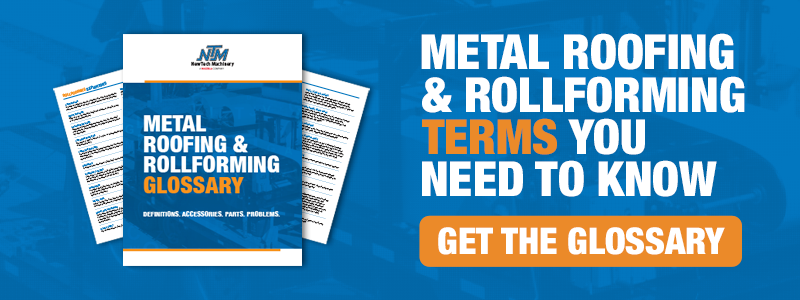
Common Rollforming Machine Types & Products
There are hundreds, if not thousands, of different types of rollforming equipment and machines used for metal fabrication all around the world. Some machines are mass produced for businesses and consumers to purchase, while others are very specialized and niche to a specific product or function. However, there are some commonplace machines making everyday items/products that we might not even notice.
Let’s discuss some typical examples of metal rollforming machines and the types of products each one produces.
Coil and Sheet Processing Rollformers

Products include:
- Cut-to-length light and heavy gauge coil and sheets
- Metal roofing and wall system panels
- Standing seam
- Corrugated
- Tile
- Shake
- Shingles
- Gutters
- Downspouts
Automotive Components Rollforming Equipment
Products include:
- Bumpers
- Safety doors
- Framing parts for cars and trucks
- Drip rails
- Flooring
Structural Framing Rollforming Machinery
Products include:
- Purlins
- Door framing
- Window framing
- Roof trusses
- Flooring
Tube & Pipe Mills/Rollforming
Products include:
- Mechanical tubing
- Structural tubing
- Automotive tubing
- Energy pipes
- Standard pipes
Other Rollforming Equipment for Miscellaneous Parts
Products include:
- Garage doors
- Metal scaffolding
- Industrial and commercial shelving units
- Lockers
- Elevator walls and components
- Silos (agricultural)
- Chimneys
- Railings and guard rails
- Fencing parts
- Appliance parts
- Air ducts and venting products
- Solar panel components
Different Parts of a Rollforming Machine
Every metal rollforming machine has different pieces and parts depending on the product it is rollforming, plus could need more or fewer parts to account for varying sizes, speeds, and complexities. However, some general elements of a rollformer are universal for most machines, including:
Power source – An essential part of a rollformer is how it’s powered and able to run. Most in-plant rollformers use electricity as the primary power source, but there are smaller portable rollformers that come gas-powered too.
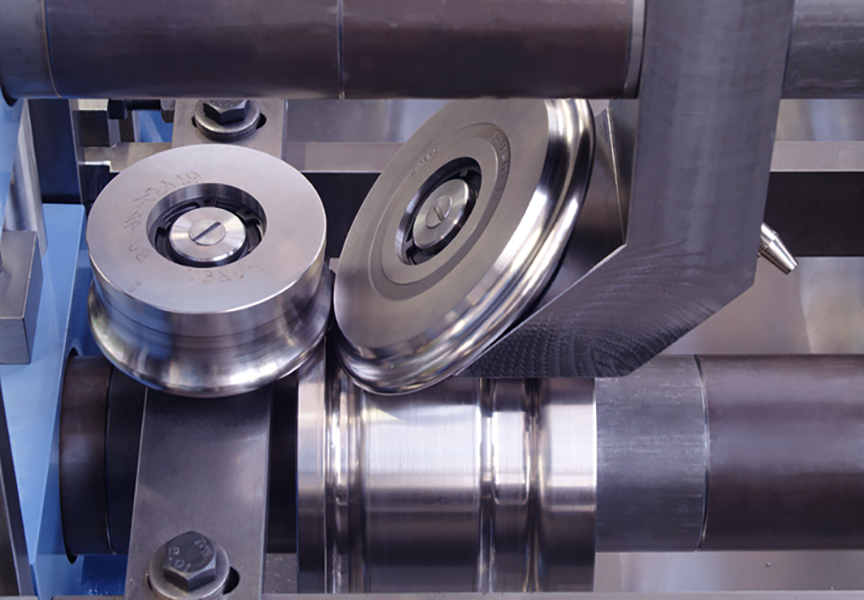
Forming rollers – Forming rollers and forming stations are the individual components that the metal passes through to bend or form a desired shape. Forming rollers are put together in a progressive series to complete a process used to form the end product. Most rollers are made of hard-chromed steel or stainless steel. For some machines, the forming rollers are also the drive rollers.
Drive rollers – Drive rollers are used to move the metal through the machine. Some rollformers incorporate the forming and driving rollers into one, while others keep the drive and forming functions separate. Separating the two results in less stress on the metal and reduces the possibility of oil canning. Drive rollers are typically made of metal or polyurethane.
Forming stations – Forming stations refer to the spots at which the metal is bent or manipulated by a pair of forming rollers. In fact, the more forming stations there are in a machine, the higher the quality of the finished product because a gradual forming reduces stresses inflicted on the material. For example, having more forming stations in a metal roofing rollforming machine helps minimize the possibility of oil canning.
Shear or guillotine – If the metal needs cut in any way, shape, or form in the rollforming machine, it features a shear, sometimes called a guillotine, to cut the metal part or component at a specified length. Shears are very common with metal coil and sheet processing rollformers. Additionally, rollformers with shears are categorized into two different cuts:
- Post-cut shear – The metal part is formed first in the forming stations and cut AFTERWARD. One benefit of cutting after forming is complete is there are no length restrictions. Products can be cut as small as one foot long or shorter without any issues.
- Pre-cut shear – The metal is cut BEFORE it goes through the forming stations at the entry of the machine. Conversely to post-cut, there are short length restrictions on pre-cut machine shears. However, pre-cut offers a cleaner cut to the flat or un-rolled metal.
Hydraulic tanks – Hydraulic tanks aren’t standard on all rollforming machines, but they are commonly added to make the machine faster for higher production. Hydraulics can also automate the machine’s shears.
Controller – The controller, either manual or computer operated, makes the machine function following the desired measurements and preferences. For example, if a pipe needs cut at a certain length, the exact length can be programmed into a controller to cut the pipe automatically when it reaches the measurement.
Final Thoughts
We hope this article gives you more of a basic understanding of what metal rollforming is, why it’s essential in the industry, items metal rollforming can produce, and some of the basic components of a rollforming machine. All-in-all, metal rollforming machinery allows businesses to manufacture large quantities of metal products in an efficient and precise manner.
As a leading manufacturer and distributor of high-quality portable rollforming machinery for metal roofing and gutters, New Tech Machinery works diligently to educate you and answer your questions about metal rollforming. We even go as far as offering an in-house Service Department available to help you with all things portable rollforming.

